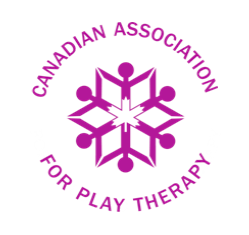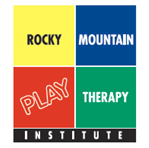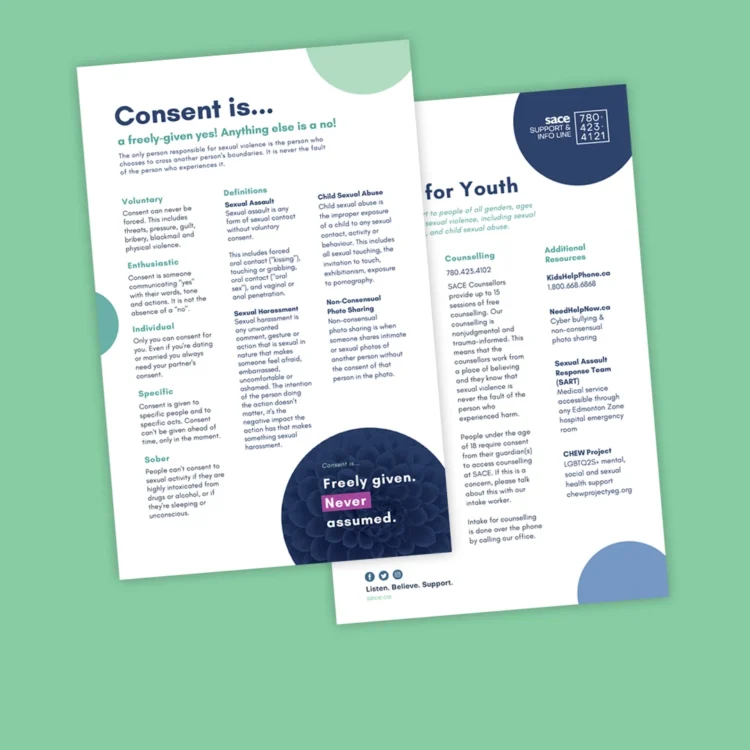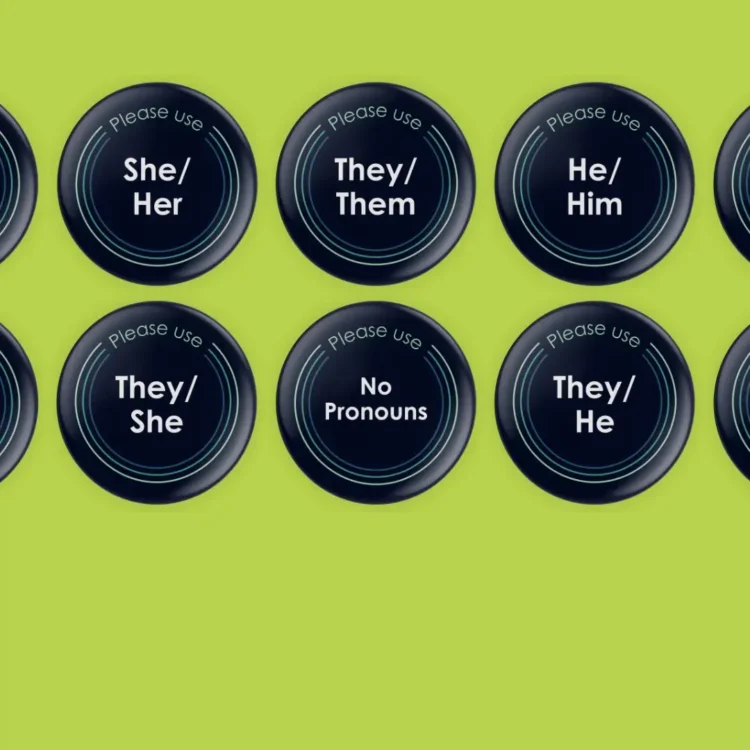Canadian Association for Play Therapy guide, Play Therapy: How It Helps Children Feel Better and Improve Behaviour
Play Therapy
What is Play Therapy?
No matter what age a person is, play therapy can be a helpful option for addressing feelings and behaviours that may become “stuck” in reaction to trauma they have experienced
The counselling offered by SACE therapists is focused on addressing the impacts of sexual violence. A common practice for SACE counsellors is to use Play Therapy when it is deemed developmentally appropriate, most frequently with children ages 3 to 12.
In sessions, the child or client chooses objects, symbols, or types of play to express their inner concerns or work through particular problems. Counsellors are skilled in interpreting the child’s play and assist in promoting growth and change while meeting them where they are at. While early sessions are open to the child’s interests and direction, over time and as trust is built, the counsellor may become more directive in play to encourage scenarios that will support the client’s current issues and processing.
What Does Play Therapy Look Like?
At SACE, our playroom is equipped with a wide range of therapeutic and intentional toys that allow clients to “play out” their feelings in the way that suits them best. Toys and creative items include a small sandbox and miniatures (people, superheroes, animals, fantasy figures, boundaries like walls and fences, bridges, furniture, etc.), stuffed toys, puppets, dress-up and make-believe items, toy household items, a stocked dollhouse, art materials, construction toys, and indoor games.
The counsellor is trained to support the child at their developmental level through first assessing the symbolism, feelings, and dynamics of the play scenarios. The child/client expresses their unconscious thoughts, fears, anxieties, and wishes, which over time the counsellor can support the child to process or resolve thoughts and feelings that have become “stuck.” Generally, this happens in subtle ways, with effects noticed in the child’s daily functioning.
The main goals in play therapy are to help the child enhance their self esteem, and build their coping resources. By analyzing the scenarios a child creates and subtly questioning or using play symbolism to assess and support a child’s perceptions, the therapist can help them to process the impacts of their experience. This can support the client’s problem-solving, creative thinking, communication skills, emotional expression, and perceptions of the relationships, options, and resources available to them.
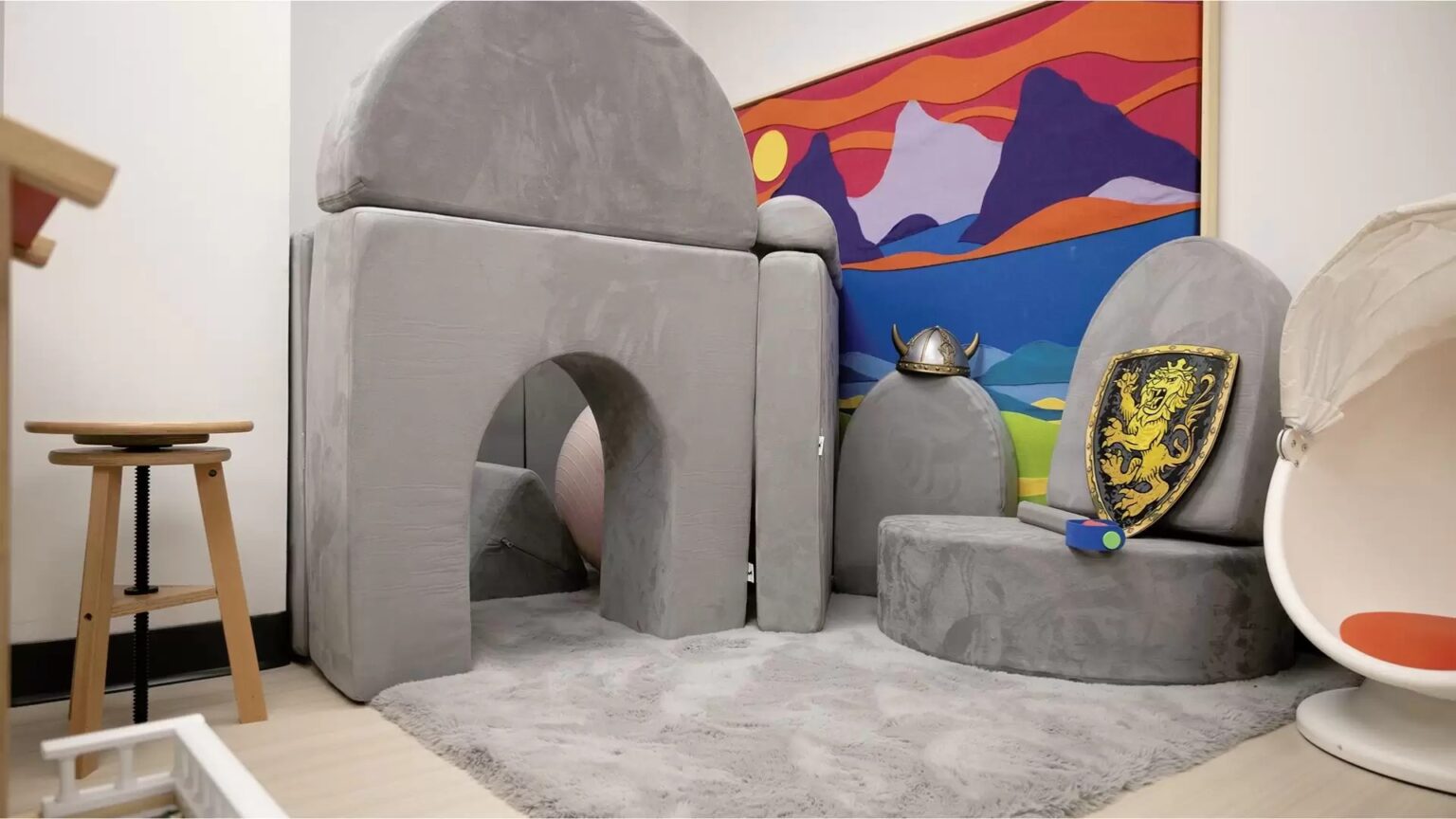
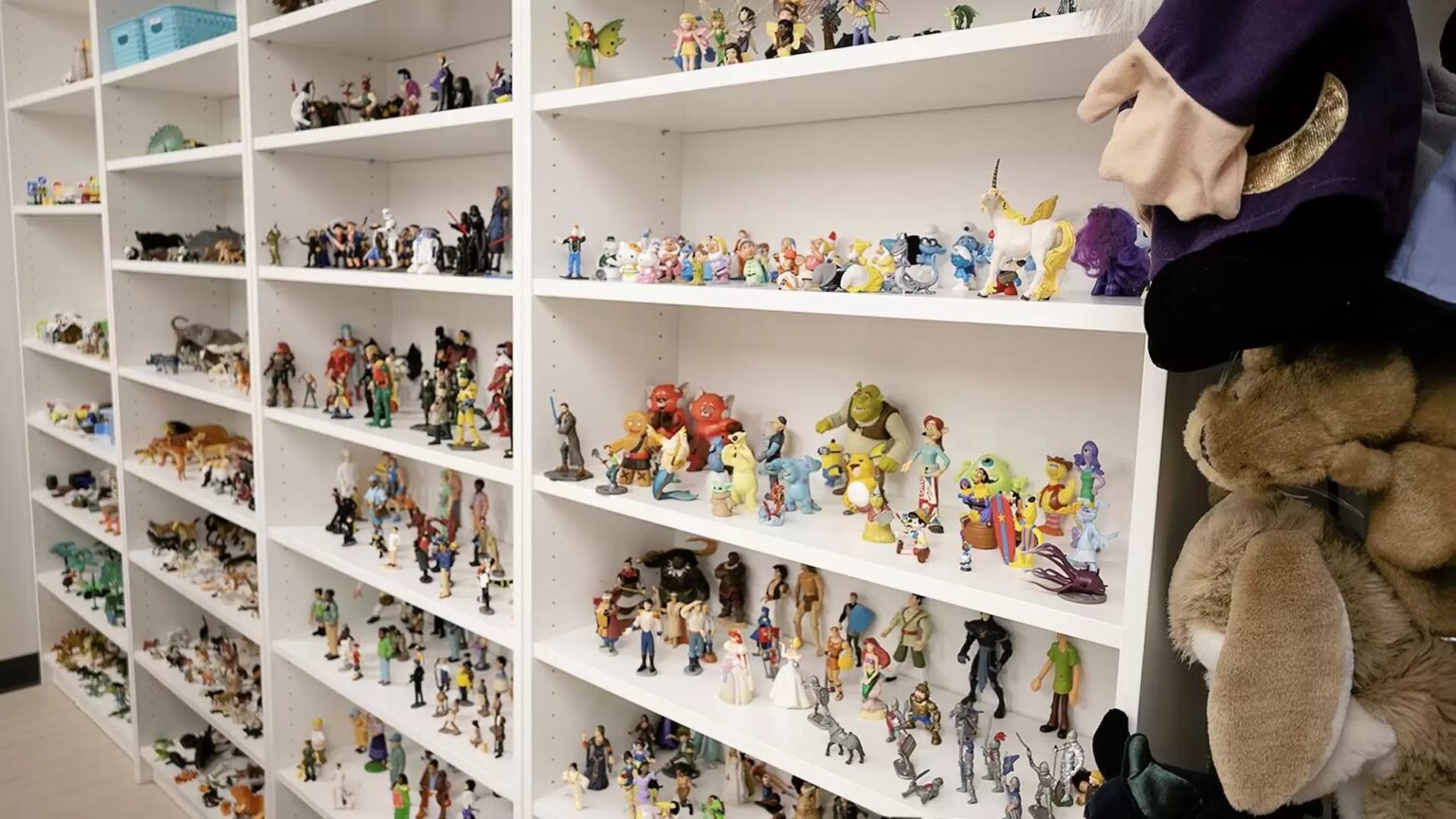
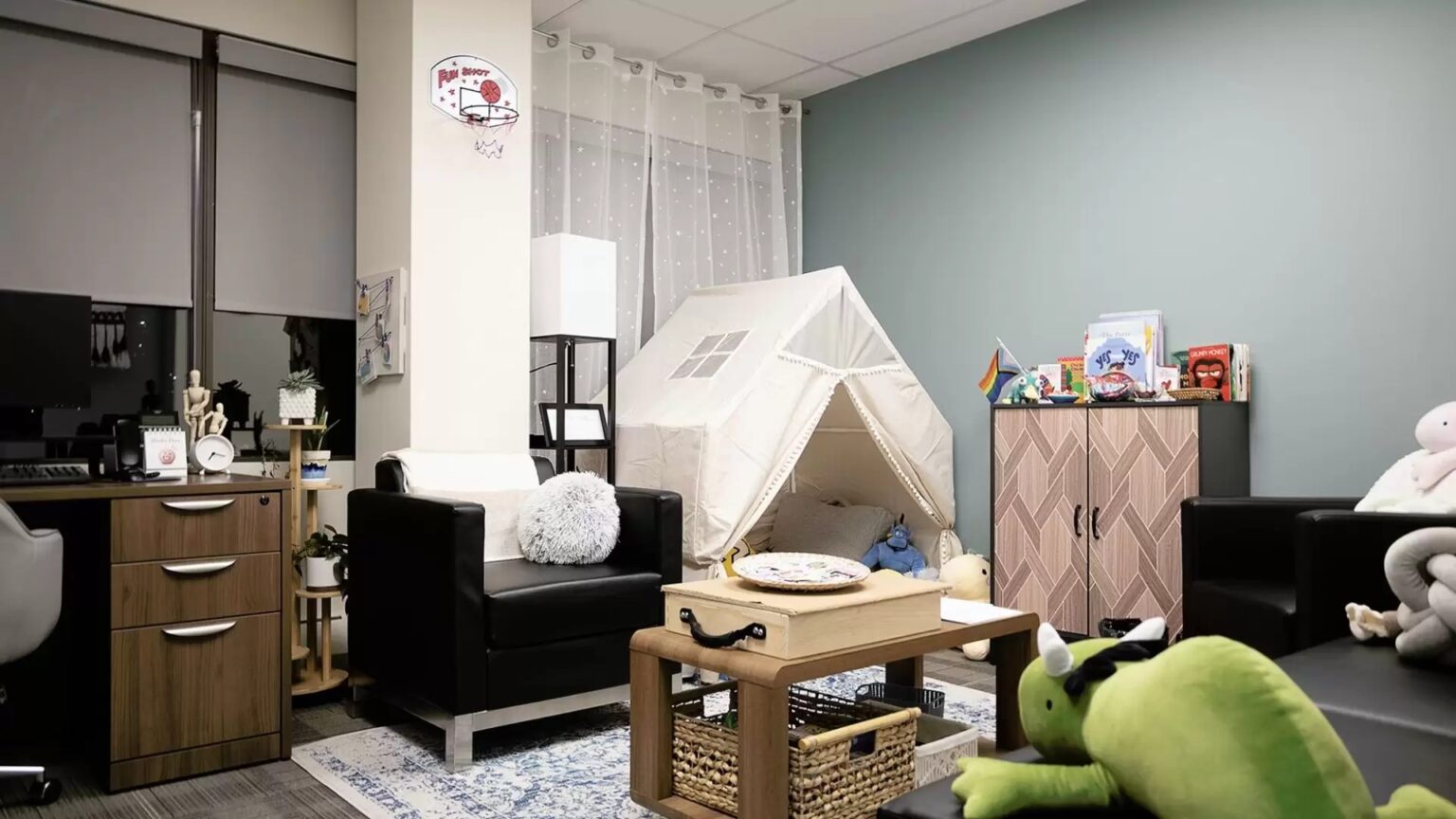
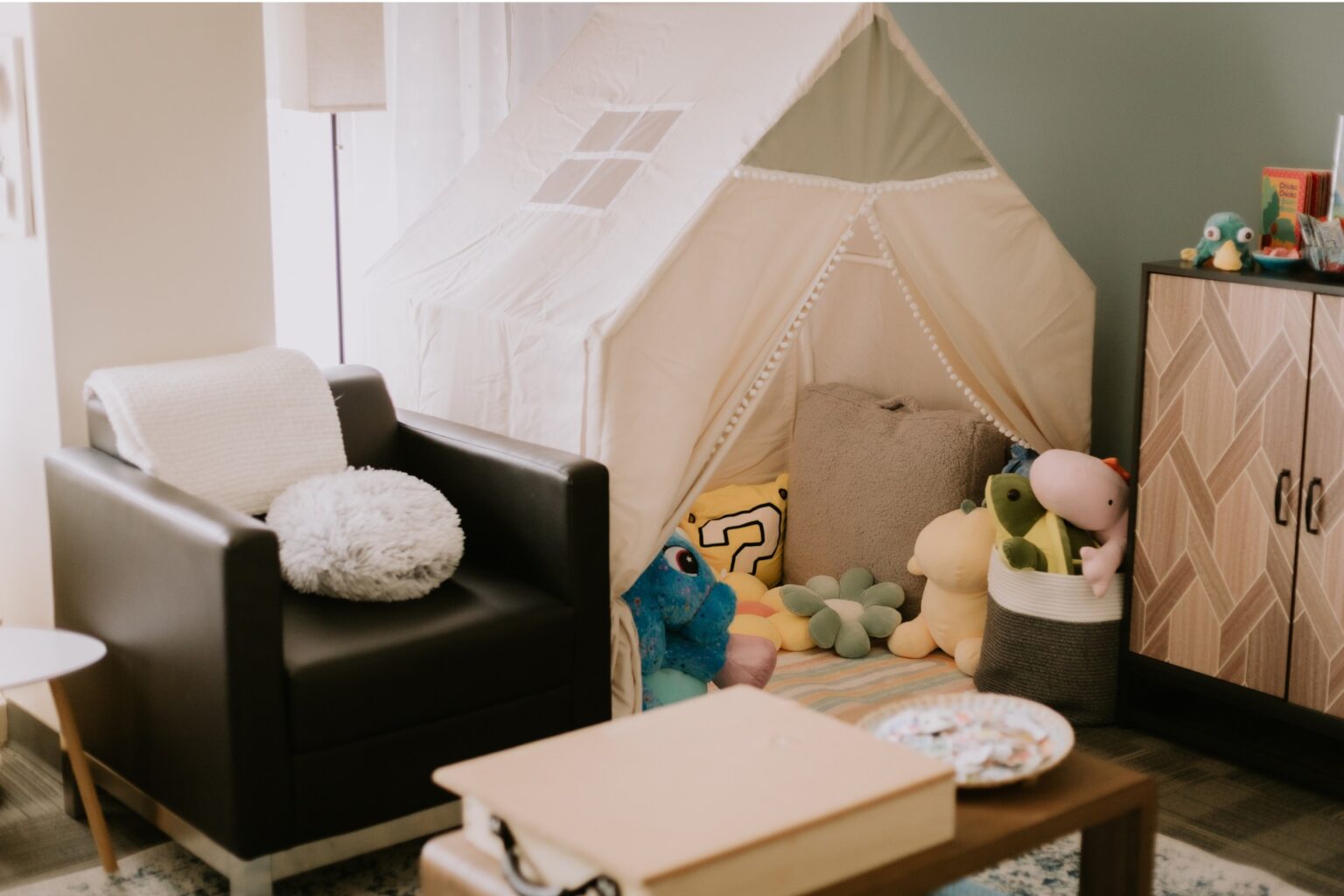
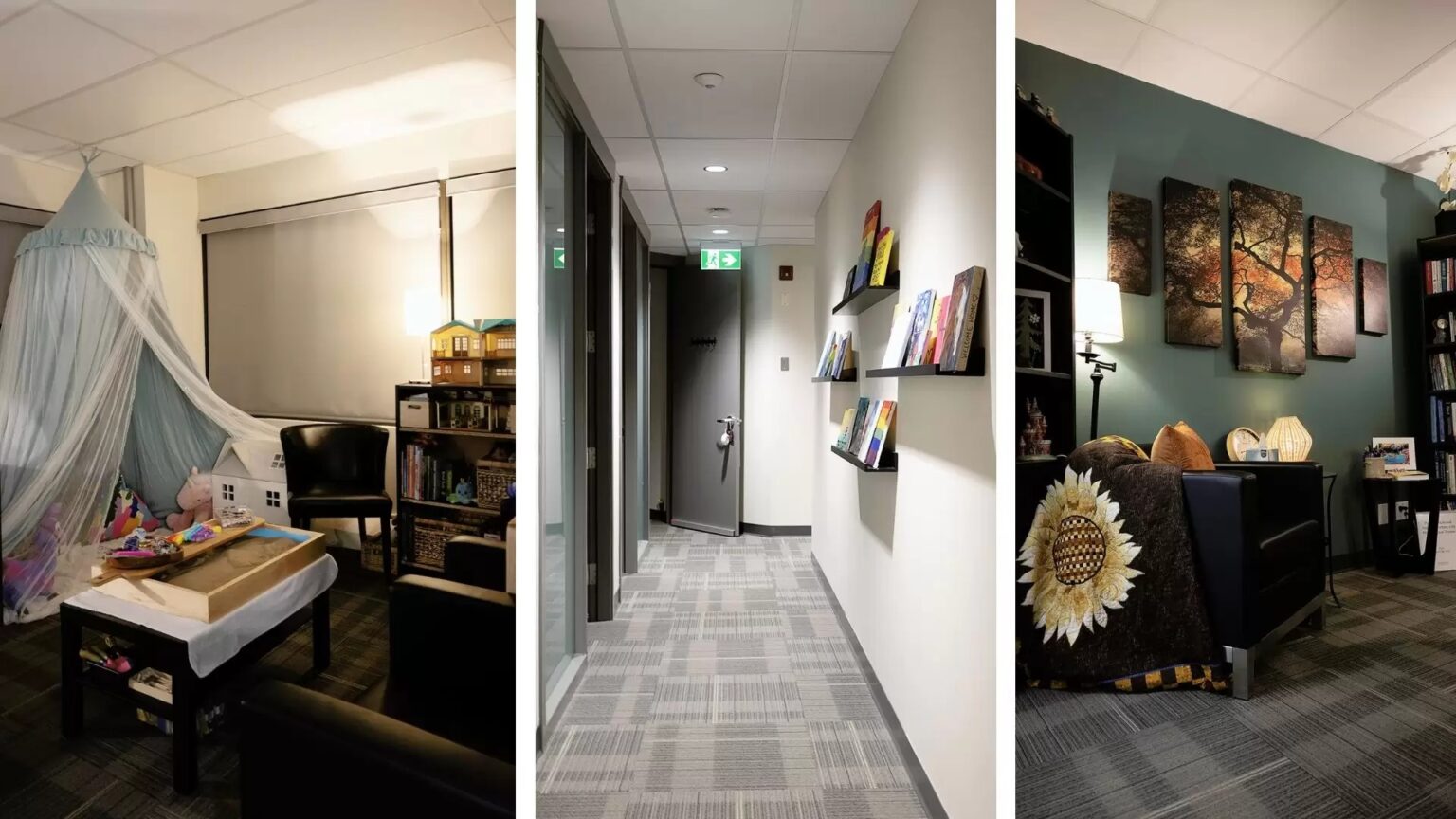
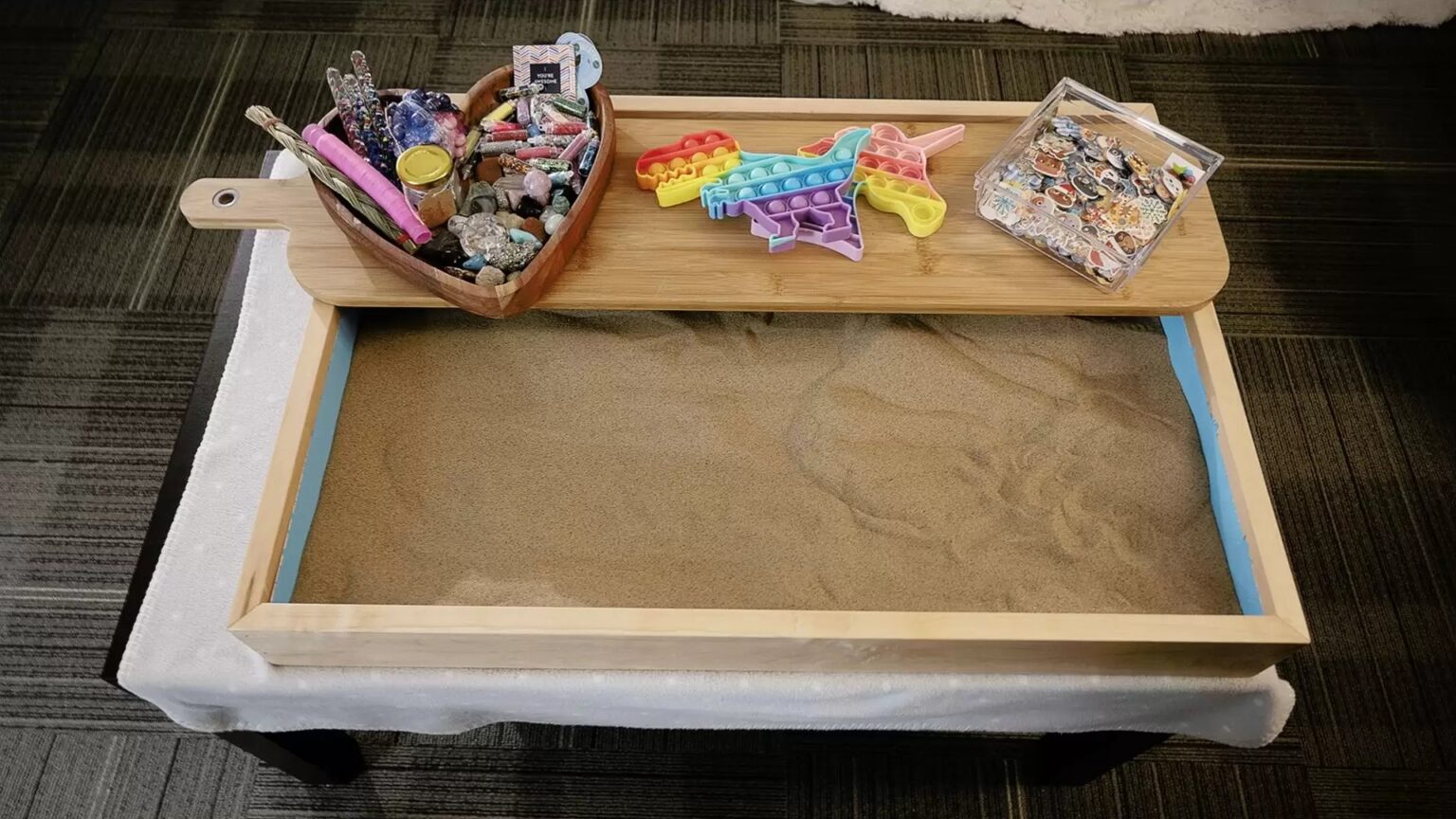
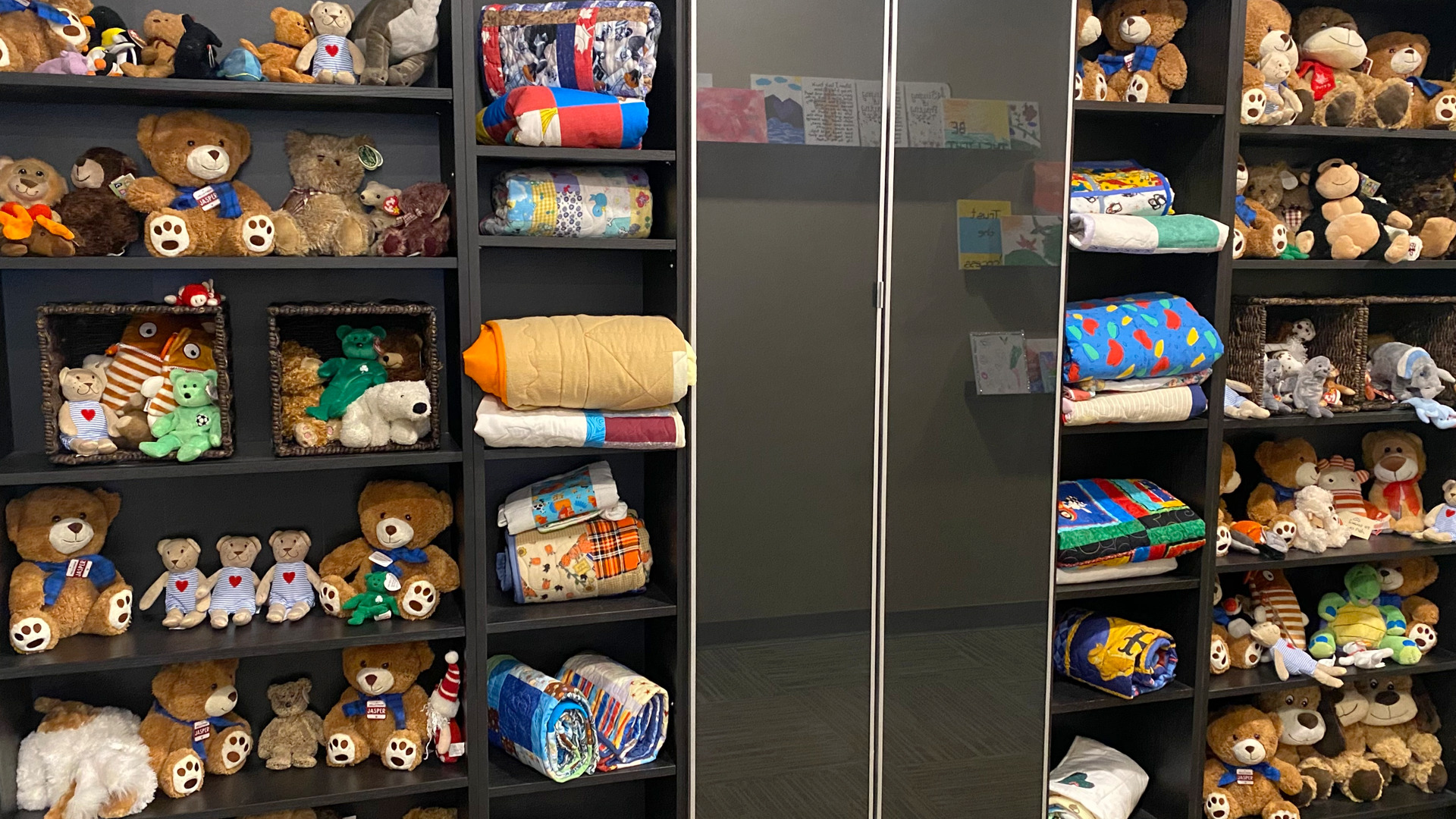
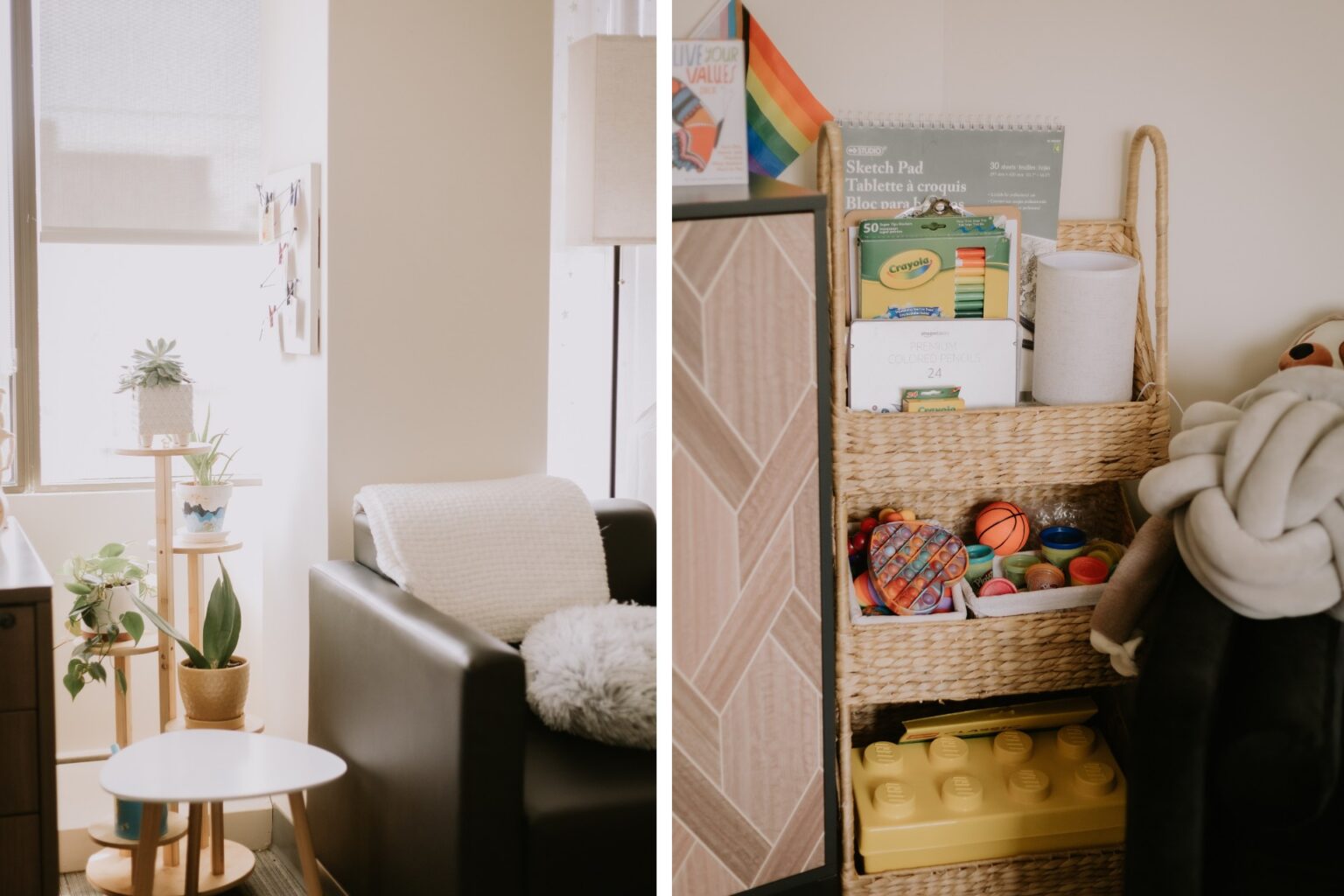
How to Support a Child Who Is Accessing Counselling Services
Your child’s therapist will work with you in order to develop a plan that will address both what your child needs to process their experience of trauma, and any other concerns that you may have. A child’s session is regarded as their own time where they can openly share with their counsellor. Caregivers are asked not to ask specific questions about their child’s session, and instead should make space to listen to their child should they choose to share. If you should have any questions or concerns about your child’s experience in counselling, counsellors are there to help. Counsellors also make sure to share any major concerns with caregivers right away. It is ok to ask questions! Your job in the counselling process is to be simply be your child’s biggest supporter.
Supporting Processing of Childhood Trauma at Any Age
While play therapy is primarily geared towards children, it can also be adapted for use with clients of any age, and may be useful for youth or adults, particularly those who experienced trauma in childhood. It can be helpful to use play or creative modalities to act as an intermediary or process to support working through trauma that may have been locked in at the developmental stage a person was in when they experienced it. By using the nonverbal, creative, and abstract methods utilized in play therapy, clients can access feelings, memories, and ways of thinking that their rational brain may not be able to reach through direct or verbal processing.
Additional Resources for Parents on Play Therapy
Definitions
The improper exposure of a child to any sexual contact, activity, or behaviour. This includes all sexual touching, the invitation to touch, exhibitionism, exposure to pornography.
Forcing another individual, through violence, threats (physical or emotional), pressure, deception, guilt, to engage in sexual activities against their will.
A voluntary agreement between 2 or more people to engage in sexual activity. Consent must be clear, informed, voluntary, sober, act and person-specific, ongoing, mutual, active, and come directly from the individuals engaging in the sexual contact. It is impossible to get consent from children, though close-in-age and peer-experimentation exceptions exist for youth ages 12-15.
A society or environment in which obtaining consent and respecting boundaries is the norm, for both sexual contact and everyday activities.
The advocacy of women’s rights on the basis of the equality of the sexes.
An intersectional approach to service delivery that acknowledges that the root of sexual violence is power inequality and works to reduce barriers that groups and individuals face when seeking support and volunteer or employment opportunities.
When an intimate photo or video is shared or taken without the voluntary consent (read consent definition above) of the person in the photo or video (Source: savedmonton.com)
Person-first language recognizes that a person is more than any one experience and that labels are sometimes harmful. People who have experienced sexual violence may use terms like victim or survivor to describe themselves, or they may use words like offender or perpetrator to describe the person who harmed them. Terms that resonate for one person may not fit for another person for a variety of reasons, and SACE supports a person’s right to self-determine their identity and experience. This is why at SACE, we default to person-first language such as “person who experienced sexual assault”, or “person who used abusive behavior”, unless speaking with or about an individual who has identified how they would like their experience to be talked about.
A society or environment whose prevailing social attitudes have the effect of normalizing or trivializing sexual assault and abuse.
Sex trafficking is a form of sexual exploitation. Human trafficking for the purposes of sexual exploitation is a crime and Canada has specific legislation in the Criminal Code (S. 279) and in the IRPA (Immigrant and Refugee Protection Action) (S. 117 & 118) to address all types of human trafficking (sexual exploitation, labour exploitation, organ, debt servitude) There are three elements to constitute human trafficking: Action + Means + Purpose.
Sexual abuse is most often used to refer to Child Sexual Abuse. To learn more about this, read the definition above or our section on Child Sexual Abuse.
Any form of sexual contact without voluntary consent, including unwanted: oral contact (kissing); sexual touching; oral-genital contact; and/or vaginal or anal penetration.
Any actual or attempted abuse of a position of vulnerability, differential power, or trust, for sexual purposes, including, but not limited to, profiting monetarily, socially or politically from the sexual exploitation of another.
Any unwanted comment, gesture, or action that is sexual in nature that makes someone feel afraid, embarrassed, uncomfortable or ashamed. The intention of the person doing the action doesn’t matter, it’s the negative impact the action has that makes something sexual harassment.
Sexual violence is an umbrella term that refers to any form of non-consensual sexual behavior, including sexual assault, sexual abuse, sexual harassment, sexual exploitation, sex trafficking, and sexual violence facilitated through technology.
Resource Package
To support you before and during your child’s time in counselling at SACE, this resource package includes information about what counselling is like, understanding how trauma impacts a child, and how to support your child during counselling.


